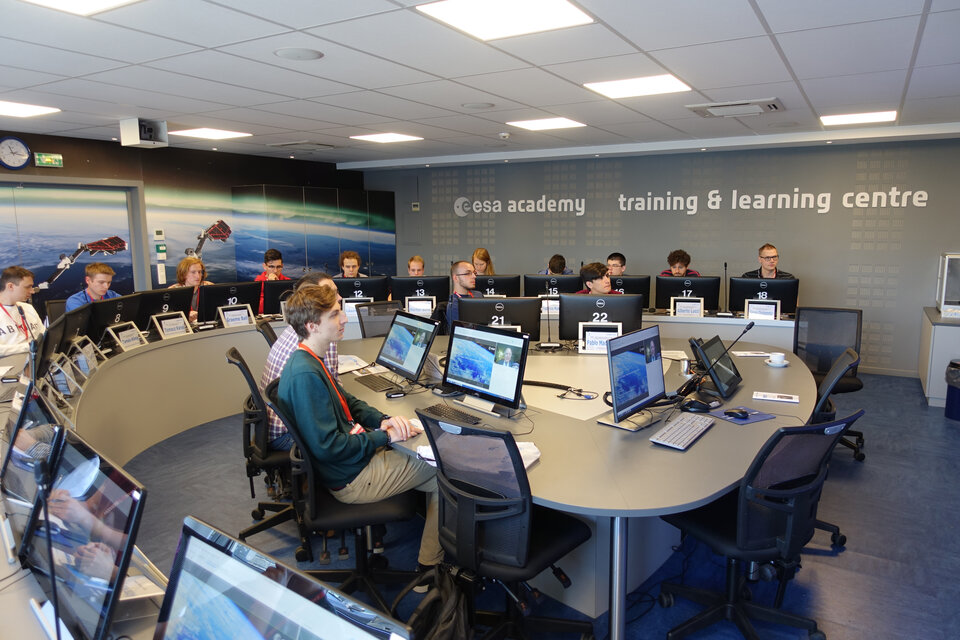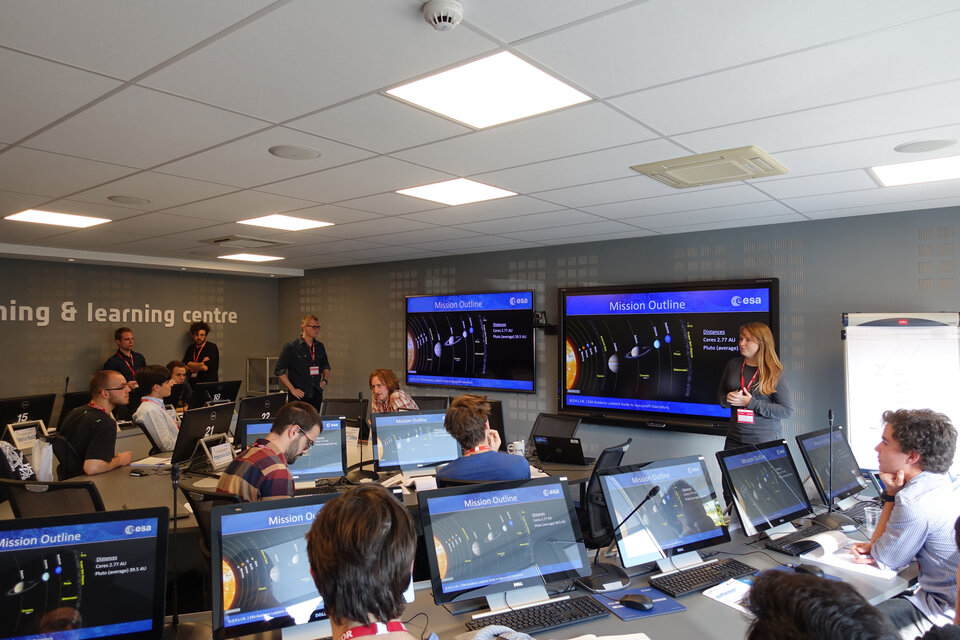Ladybird Guide to Spacecraft Operations boosts preparations for student satellite
From 15 – 18 May 2018, 21 students from 9 different ESA Member and Associate States descended upon ESA Academy’s Training and Learning Centre, ESA’s European space Security and Education Centre (ESEC), Redu, Belgium. Their mission: complete the ESEO Ladybird Guide to Spacecraft Operations Training Course.
The Course’s overarching theme was supporting preparations for the European Student Earth Orbiter, or ESEO for short. ESEO is a micro-satellite mission to Low Earth Orbit, where it will be able to take photos of Earth as well as measure radiation levels and test new technologies. Its aim is to provide students with invaluable hands-on experience.
This training course was delivered for the third time for the ESA Academy Programme by a senior ESA engineer from the Advanced Operations Concepts Office of ESOC (European Space Operations Centre). The engineer has several years of experience with spacecraft operations, and the teaching approach was chosen to include actual examples of spacecraft missions and real operational scenarios. This is a perfect fit with the “Ladybird approach”, emphasising real-life examples and personal interactions, while limiting mathematical and technical aspects. The participants were there not only to learn about spacecraft operations, but also to think as operators.
“This course has certainly been a great experience,” enthused a Spanish student from the Technical University of Madrid. “It has allowed me to glimpse the wonders and perils in the field of spacecraft operations: common yet strong mind traps, recurring errors, complex systems, elegant solutions and unsolved problems. Learning from real missions in the past, the problems they encountered, the mistakes that were made and some of the clever ways in which they managed to face those problems was a pleasure for a space enthusiast like me.”

The training course covered all the fundamental disciplines necessary to understand how a spacecraft is operated, such as:
- Attitude Determination and Control
- Orbit Control
- Power Generation and Management
- On-board Data Handling
- On-board Software
- Thermal Control
- Telemetry, Tracking and Command
Once the basics had been conveyed, the students needed to put theory into practise with a group exercise. They were split into two groups: team Prince Charming and team BOHLIN. Each then had to plan a rough design for a spacecraft that they would operate in a virtual mission scenario. Happily, both teams managed to save their spacecraft from all manner of near-disasters, and retrieve valuable science data. The participants are now better-prepared than ever to support ESEO!
“The course provided an insightful overview of spacecraft subsystems from an operations standpoint,” said a Spanish student from Cranfield University. “The content will prove very useful in the future as we now have a better idea on how spacecraft are operated, and are more aware of problems that a mission can face. Thanks to this training course, we now have a broader idea of the complexity of space missions, and we will be able to take into consideration the operational implications of our mission design.”

Opportunities were also provided to visit the PROBA Operations Room, the Baseband Equipment Room, and inside the Redu 1 Antenna. Some students even seized this chance to quiz the ESA Operations Engineers on-shift during the tour for their top tips!
With their certificate of participation and course transcript, the students are now able to claim ECTS credit(s) for participation from their home universities.
A Hungarian student from the Budapest University of Technology and Economics summarised their experience: “This was the first time I have ever participated in a training course like this in ESA but this week will be a lifelong memory and experience for me. The lectures were so interesting and intensive, we could obtain first-hand knowledge from a distinguished spacecraft operator. It was also an outstanding opportunity to meet and make friendships with those students from many countries of Europe who have the same field of interests on the space sector and who I would have never met without this training course. I would absolutely recommend this training for everyone who has interest in spacecraft operations.”
To find more information about upcoming and future ESA Academy training opportunities check our current opportunities or contact us esa.academy @ esa.int


